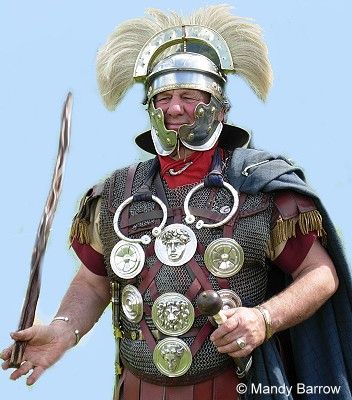Centuria was initially the smallest tactical unit of the legion in the Roman army. Initially, it had a hundred soldiers (centum means “one hundred”) commanded by a centurion (centurio). In the 4th century BCE a new tactical unit consisting of two centuries has been created – manipulator. Over time, centurie principii and hastati reduced to 60 soldiers, and centurie triarii to 30 soldiers. The century was divided into ten contubernia, with eight soldiers each.
As a result of Marius’ military reforms, the centurion’s full-time number was raised to 100 soldiers (two centuries were still manipulators). At the time of the empires the legion cohort consisted of 6 centurions of 80 soldiers each (forming 3 manipulates of 160 soldiers). In contrast, independent thousandth cohorts were divided into 10 centurias, and five hundredth cohorts – into 6 centurias. Centuria officially possessed 80 fighting people; in practice, as the name suggests, the centuria numbered 100 people. The other twenty were slaves and servants who cooked and supported the contubernia.
Centuria was the smallest unit of the Roman army that fought as a single formation. In addition to the centurion, which was 59 in the legion, the centurion included optio and tesserarius. The department had its own banner – signum which was held by the siginifer and its own traditions. There was also a buccinator in the century, which played buccina – the form of a horn that gave orders. During the battle, optio was at the very end on the right side of the unit and was supposed to maintain discipline and prevent escape. The centurion, in turn, stood in the first row next to signifera, on the left. The centurion commanded the unit and was replaced by optio in the event of death.
Centurions of the next six centuries (from the least to the most prestigious position): hastatus posterior, hastatus prior, princeps posterior, princeps prior, pilus posterior and pilus prior.







